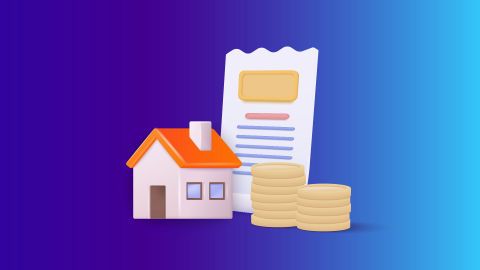What is a foreclosure letter?
A foreclosure letter is an official document from the bank or financial institution stating that your home loan has been fully paid off or that you have closed your loan account. The letter confirms that the loan is now settled and that no further dues remain. If you are planning to transfer your home loan to another bank or financial institution, you will need this letter. It is one of the final steps in the process and clears any remaining obligations with the original lender.For a home loan balance transfer, the foreclosure letter becomes necessary to ensure that the new lender is confident that your previous home loan has been settled. Without this letter, your new lender might be hesitant to take over the loan. Therefore, obtaining a foreclosure letter is a crucial step.
Importance of a foreclosure letter for home loan transfer
A foreclosure letter serves multiple purposes:- Proof of loan settlement: It acts as proof that the original lender has been paid in full and that the home loan has been closed. This is necessary for your new lender to complete the transfer.
- Clears legal liabilities: The letter ensures that you are no longer liable for the original loan, preventing the original lender from pursuing any future claims against you.
- Clears property title: The foreclosure letter plays an essential role in transferring the property title to the new lender. It confirms that the lender no longer has a legal claim on the property.
- Required for home loan transfer: Without a foreclosure letter, your new lender may not approve the home loan transfer, as they want confirmation that the old loan has been fully cleared.
Steps to obtain a foreclosure letter for home loan transfer
If you are considering transferring your home loan, the first thing you need to do is to ensure that your existing loan is closed. Below are the steps to obtain a foreclosure letter for home loan transfer:1. Check your loan balance: Ensure that you have paid off all dues, including the principal amount and any outstanding interest. The loan account must be fully cleared to request a foreclosure letter.
2. Request foreclosure from your current lender: Contact your existing lender and request a foreclosure letter. Most lenders offer this service after the loan is paid in full. You may need to provide documents like your ID proof, loan account number, and other relevant documents to process the request.
3. Pay any outstanding fees: Some lenders may charge a foreclosure fee, especially if the loan is paid off before the agreed tenure. Ensure that all fees are cleared to avoid any delays in obtaining the foreclosure letter.
4. Obtain the foreclosure letter: Once all dues are cleared, the lender will issue a foreclosure letter. This letter may be provided either in hard copy or electronically, depending on the lender's policy.
5. Get the NOC (No Objection Certificate): In addition to the foreclosure letter, you may need to obtain a No Objection Certificate (NOC). This certificate is necessary for completing the legal formalities for the home loan transfer.
6. Submit the documents to your new lender: Once you have the foreclosure letter and NOC, you can submit these documents to the new lender to initiate the home loan transfer process.
Additional Read: Home Loan Balance Transfer process
How does a home loan transfer work?
Home loan transfer allows you to shift your outstanding loan balance from one lender to another. It is often done to take advantage of a better interest rate or improved terms. The new lender essentially takes over your existing home loan, paying off the previous lender and offering you a fresh loan with better terms.Here is how the home loan transfer works:
1. Research lenders: First, research different lenders to compare interest rates, loan tenure, and other terms that might benefit you in the long term.
2. Check eligibility: Your new lender will assess your eligibility for a home loan transfer. They will check your credit score, monthly income, and the outstanding loan amount.
3. Application for transfer: Once you have selected a lender, you will need to fill out an application form for the home loan transfer. You will submit your current loan details, along with the foreclosure letter and NOC from your old lender.
4. Approval from new lender: Your new lender will verify the documents and may approve the transfer. Once approved, they will pay off the balance of the old loan, and you will start making payments to the new lender under the new terms.
Common reasons for home loan transfer
- Lower interest rate: One of the main reasons people transfer their home loans is to benefit from a lower interest rate. A reduced rate can save you money on EMIs over the loan tenure.
- Better terms: Some borrowers choose home loan transfer if they can secure better repayment terms, such as a longer tenure or more flexible conditions.
- Improved customer service: Switching lenders can sometimes be beneficial if you are unhappy with your current lender’s customer service and wish to have a smoother loan experience.
- Switching to a fixed rate loan: If you have a floating interest rate on your current home loan and expect interest rates to rise, you may choose to transfer to a fixed-rate loan for more stability.
Things to keep in mind when transferring your home loan
- Foreclosure charges: Many lenders charge a foreclosure fee if you repay your loan before the agreed tenure. These charges can vary, so it is important to understand what your current lender will charge.
- Processing fees: The new lender may also charge processing fees for the transfer. It is important to factor these into your calculations to ensure that transferring your loan still makes financial sense.
- Credit score impact: The transfer process could affect your credit score, especially if the previous loan was not paid on time or you miss payments during the transfer.
- Timing: The process of transferring a home loan can take a few weeks. It is important to plan ahead to avoid any disruptions in your payments or home loan account status.
Explore Bajaj Housing Finance Home Loan Balance Transfer
Bajaj Housing Finance provides loans tailored to your financial needs. With a quick and easy application process, attractive loan terms, and a dedicated customer support team, Bajaj Housing Finance is an ideal choice for anyone seeking a new home loan or home loan refinancing.If you already have a home loan and are looking to transfer it to a new lender, you can consider the home loan balance transfer and top-up loan option offered by Bajaj Housing Finance. With competitive interest rates, flexible repayment terms, and a simple application process, managing your home loan becomes hassle-free.
To apply for a home loan balance transfer and top-up loan from Bajaj Housing Finance, follow these easy steps:
1. Click the 'APPLY' button on this page.
2. Provide your full name, mobile number, employment type, and preferred loan type.
3. Generate and submit your OTP for phone number verification.
4. Select your current home loan lender from the dropdown and enter your monthly salary and desired loan amount.
5. Continue by filling out additional details, including your date of birth, PAN number, email, current EMI amount, and other relevant information.
6. Click on the 'SUBMIT' button to complete your application.
Once submitted, your application will be processed, and our representative will contact you to guide you through the next steps.
Ready to make your home loan work for you? Visit Bajaj Finserv today to explore the best home loan options tailored to your needs.




